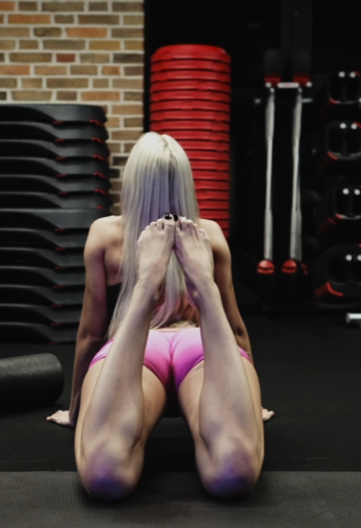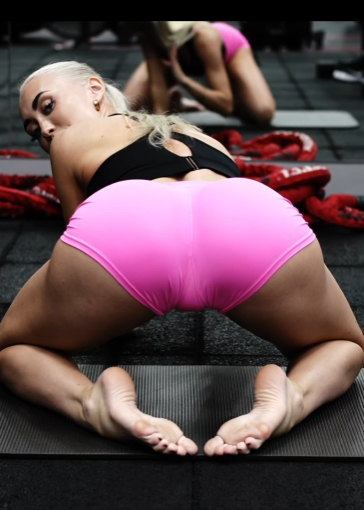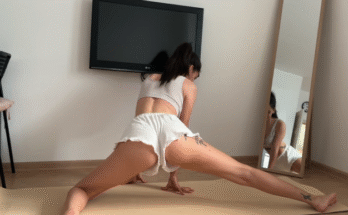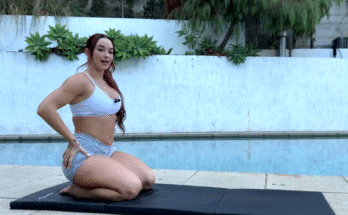
Our hips carry more tension than we often realize. They’re the central link between our upper and lower bodies, involved in nearly every movement we make — walking, sitting, climbing stairs, and even just standing. Over time, from prolonged sitting, stress, or physical strain, our hip muscles can become tight, leading to discomfort, stiffness, or even back pain. One of the most powerful ways to counteract this is through a deep hip stretch.
The Importance of Hip Flexibility
The hip joint is one of the largest and most powerful joints in the body. It’s surrounded by complex muscle groups including the glutes, hip flexors, adductors, and piriformis. When these muscles become tight, they limit mobility and place strain on surrounding areas like the lower back and knees. Athletes, dancers, office workers, and older adults alike can all benefit from regular deep hip stretching.
Improving hip flexibility helps:
- Reduce lower back pain
- Increase athletic performance
- Improve posture
- Support injury prevention
- Ease tension and stress stored in the body
Understanding Deep Hip Stretching
A deep hip stretch is not just a simple forward bend or lunge. It’s a mindful process that targets deep muscle tissue and fascia, sometimes unlocking emotions and stress that have been stored in the body. Practicing it regularly can transform your sense of freedom in movement.
To perform a deep hip stretch effectively, you need:
- Patience and deep breathing
- A quiet, safe space
- Props like yoga blocks, straps, or cushions (optional)
- Gentle warm-up before attempting deeper stretches
Let’s explore a sequence of deep hip stretches that you can try at home.

1. Butterfly Stretch
This is a gentle opener for the hips and groin.
How to do it:
- Sit on the floor with your spine straight.
- Bring the soles of your feet together and let your knees fall outward.
- Hold your feet with your hands and gently press your knees toward the floor using your elbows.
- Breathe deeply and hold for 1–2 minutes.
Benefits: Opens the inner thighs and hips gently. Improves circulation and prepares the body for deeper work.
2. Pigeon Pose (Eka Pada Rajakapotasana)
This yoga pose is well-known for its deep hip-opening effects.
How to do it:
- Begin in a tabletop position.
- Bring your right knee forward toward your right wrist.
- Place your right ankle near your left hip, extending the left leg straight behind you.
- Keep your hips square and gently lower your torso over your front leg.
- Use a pillow or block under the hip if needed.
- Hold for 2–3 minutes, then switch sides.
Benefits: Stretches the hip flexors, glutes, and piriformis. Relieves tension and promotes flexibility.
3. Lizard Pose (Utthan Pristhasana)
A deep lunge stretch that targets multiple areas of the hip.
How to do it:
- From a lunge position, bring both hands to the inside of your front foot.
- Slide the back leg further behind for a deeper stretch.
- You can lower your elbows to the ground or a block for more intensity.
- Hold for 1–2 minutes on each side.
Benefits: Opens the hip flexors, groin, and inner thighs. Prepares the body for more complex hip movements.

4. Happy Baby Pose (Ananda Balasana)
This playful pose is perfect for relaxing deeply into the hip socket.
How to do it:
- Lie on your back.
- Bend your knees and grab the outsides of your feet.
- Pull your knees toward your armpits, keeping your back flat on the ground.
- Gently rock side to side and breathe deeply.
- Hold for 1–2 minutes.
Benefits: Stretches the inner groin and spine. Calms the mind and releases lower body tension.
5. Frog Pose
Frog Pose is one of the deepest hip openers and is excellent for improving range of motion.
How to do it:
- Start on hands and knees.
- Widen your knees as far apart as comfortable while keeping your feet in line with your knees.
- Lower your forearms to the ground and keep your hips in line with your knees.
- Stay here for 1–2 minutes or longer if you can breathe deeply.
Benefits: Targets the inner thighs and hips, improves mobility, and releases deeply held tension.

Tips for Safe and Effective Stretching
- Warm Up First
Before diving into deep hip stretches, warm up your body. Gentle yoga poses, dynamic stretches, or even a brisk walk can prepare your muscles. - Don’t Force It
Never push your body into pain. Discomfort is okay, but sharp pain is a warning sign. Use props and modify poses as needed. - Breathe Deeply
Your breath is a powerful tool. Inhale to lengthen, and exhale to relax deeper into the stretch. Slow breathing also activates the parasympathetic nervous system, helping your body release tension. - Be Consistent
Flexibility takes time. Stretching for even 10–15 minutes a day can lead to noticeable improvements in just a few weeks. - Hydrate and Rest
Muscles respond better when hydrated. Also, allow time for recovery and listen to your body after intense stretching sessions.

Emotional Release and the Hips
Interestingly, many people find themselves unexpectedly emotional during or after deep hip stretches. That’s because hips are thought to store stress, trauma, and emotional tension. When we release physical tension in this area, we might also experience an emotional release — tears, laughter, or a deep sense of peace.
This is perfectly normal and can be deeply healing. Allow yourself to feel whatever arises without judgment.
Creating a Hip-Opening Routine
Here’s a simple 15-minute daily hip stretch routine:
- Butterfly Pose – 2 minutes
- Lizard Pose (Right side) – 2 minutes
- Lizard Pose (Left side) – 2 minutes
- Pigeon Pose (Right) – 2 minutes
- Pigeon Pose (Left) – 2 minutes
- Happy Baby Pose – 2 minutes
- Frog Pose – 3 minutes
End with a few moments of lying in Savasana (relaxation pose) to absorb the benefits.

Final Thoughts
The deep hip stretch is more than just a physical exercise — it’s a path to understanding your body’s needs and releasing years of built-up tension. Whether you’re an athlete wanting better performance, someone recovering from injury, or simply looking to move more freely, deep hip stretching can profoundly enhance your wellbeing.
Start small, be patient, and remember: flexibility is a journey, not a destination. Your hips will thank you — not just with more range of motion, but with freedom, relief, and a renewed sense of connection to your body.



